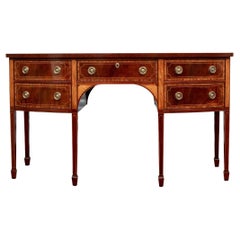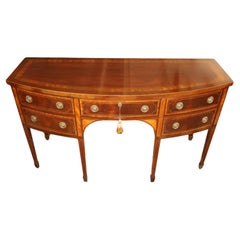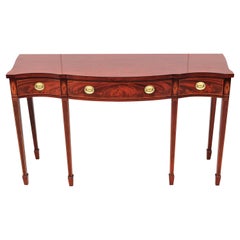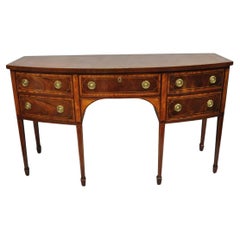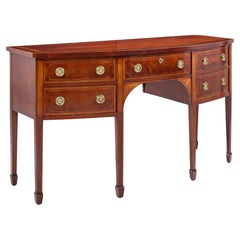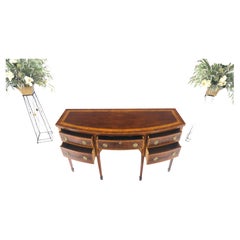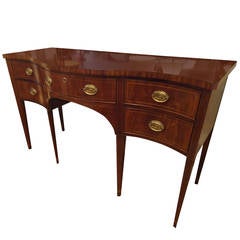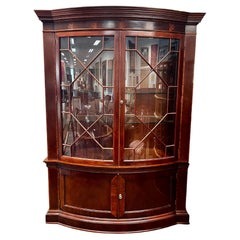Baker Charleston Sideboard
20th Century American American Classical Sideboards
Brass
1990s American Hepplewhite Sideboards
Mahogany
Late 20th Century American Sheraton Sideboards
Brass
Late 20th Century Unknown Hepplewhite Sideboards
Mahogany
Mid-20th Century American Georgian Sideboards
Mahogany
20th Century American Federal Sideboards
Mahogany, Satinwood
Recent Sales
Vintage 1950s American Sideboards
Late 20th Century American Sideboards
Glass, Mahogany
Late 20th Century American Federal Sideboards
Brass
Late 20th Century American Federal Sideboards
Brass
1990s Sheraton Console Tables
Mahogany, Satinwood
Late 20th Century American American Classical Sideboards
Brass
20th Century American Federal Sideboards
Brass
Late 20th Century American Federal Console Tables
Brass
1990s American British Colonial Sideboards
Brass
1990s American Sideboards
Brass
Late 20th Century Unknown George III Sideboards
Brass
Late 20th Century Sideboards
Mahogany
People Also Browsed
20th Century Belgian Neoclassical Convex Mirrors
Iron
21st Century and Contemporary European Chandeliers and Pendants
Brass
Mid-20th Century French Louis XV Dining Room Tables
Mahogany
2010s Italian Mid-Century Modern Wall Lights and Sconces
Brass
Late 20th Century Italian Mid-Century Modern Chandeliers and Pendants
Metal
Vintage 1970s Italian Mid-Century Modern Dining Room Chairs
Leather, Wood
Vintage 1940s French Art Deco Sofas
Upholstery, Wood
Antique 19th Century English George III Sideboards
Brass
Antique 19th Century French Bergere Chairs
Walnut
Antique 1780s British Georgian Sideboards
Mahogany
Mid-20th Century American Hepplewhite Sideboards
Mahogany
Antique 19th Century Regency Sideboards
Mahogany
Vintage 1930s Swedish Art Deco Chandeliers and Pendants
Brass
Vintage 1920s American Art Deco Apothecary Cabinets
Wood
2010s Renaissance Center Tables
Mahogany
Vintage 1930s Italian Art Deco Vanities
Upholstery, Walnut
Baker Furniture Company for sale on 1stDibs
Owing to the company’s collaborations with many leading designers and artists over time, vintage Baker furniture is consistently sought after today. The heritage brand’s chairs, dining tables, desks and other pieces are widely known to collectors and design enthusiasts for their fine craftsmanship and durability.
Within a few decades of its launch, Baker Furniture Company evolved into one of the largest and most important furniture manufacturers in the United States and became known for its high-quality production standards. Siebe Baker and business partner Henry Cook founded the original iteration of Baker Furniture Company in 1890 in Allegan, Michigan, after immigrating to the United States from the Netherlands. Allegan is a small town west of Grand Rapids, which, at that time was home to Widdicomb Furniture Co. and more and was known as America’s furniture capital. The company manufactured doors and interior moldings and introduced a combination desk and bookcase in 1893. In the early 1900s, Siebe became the sole owner of the business.
Among others, stage designer Joseph Urban and modernist designer Kem Weber contributed designs to Baker in the 1920s. In 1932, under the leadership of Siebe’s son, Hollis, who started at the company as a salesman but took the reins when his father passed in 1925, Baker Furniture introduced bedroom pieces and debuted its Manor House collection, which made reproductions of European furnishings available to the American market. (Hollis was an avid traveler and procured antiques overseas for the company to reproduce in the United States.) Soon, Baker Furniture Company moved to Holland, Michigan, and eventually opened showrooms in Grand Rapids and elsewhere.
Pioneering Scandinavian designer Finn Juhl created a Danish modern line for Baker in 1951, and the company produced his award-winning Chieftain chair for a short time. In the late 1950s, Baker introduced the Milling Road label to reach a younger audience with stylish but less costly furnishings like console tables, walnut dining chairs and more, and in 1961, British furniture designer T.H. Robsjohn-Gibbings introduced a modern neoclassical line at Baker.
The 1960s and ’70s saw the introduction of historic reproduction furniture lines such as Woburn Abbey and the Historic Charleston collection, which remain very popular to this day. In 1990, Baker was licensed to produce a furniture line from Colonial Williamsburg. That same year, the Smithsonian Museum introduced Baker’s Chippendale chair into its permanent collection and the Grand Rapids Art Museum dedicated an exhibition to Baker’s 100th anniversary, a showcase that included 150 pieces of furniture Siebe Baker had collected as part of a larger assortment that had served as inspiration for his designs.
Today, vintage Baker furniture, such as its elegant mahogany nightstands and teak credenzas — particularly those crafted by Finn Juhl — sees high demand online and elsewhere. The company continues to produce contemporary collections with well-known designers such as Bill Sofield, Barbara Barry and Kara Mann and remains on par with some of the highest quality furniture in the industry.
Browse vintage Baker armchairs, sofas, coffee tables and other furniture on 1stDibs.
Finding the Right Sideboards for You
An antique or vintage sideboard today is a sophisticated and stylish component in sumptuous dining rooms of every shape, size and decor scheme, as well as a statement of its own, showcased in art galleries and museums.
Once simply boards made of wood that were used to support ceremonial dining, sideboards have taken on much greater importance as case pieces since their modest first appearance. In Italy, the sideboard was basically a credenza, a solid furnishing with cabinet doors. It was initially intended as an integral piece of any dining room where the wealthy gathered for meals in the southern European country.
Later, in England and France, sideboards retained their utilitarian purpose — a place to keep hot water for rinsing silverware and from which to serve cold drinking water — but would evolve into double-bodied structures that allowed for the display of serveware and utensils on open shelves. We would likely call these buffets, as they’re taller than a sideboard. (Trust us — there is an order to all of this!)
The sideboard is often deemed a buffet in the United States, from the French buffet à deux corps, which referred to a storage and display case. However, a buffet technically possesses a tiered or shelved superstructure for displaying attractive kitchenware and certainly makes more sense in the context of buffet dining — abundant meals served for crowds of people.
Every imaginable iteration of the sideboard has taken shape over the years. Furniture maker and artist Paul Evans, whose work has been the subject of various celebrated museum exhibitions, created ornamented, welded and patinated sideboards for Directional Furniture, collections such as the Cityscape series that speak to his place in revolutionary brutalist furniture design as much as they echo the origins of these sturdy, functional structures centuries ago.
If mid-century modern sideboards or vintage Danish sideboards are more to your liking than an 18th-century mahogany sideboard with decorative inlays in the Hepplewhite style, the particularly elegant pieces crafted by designers Hans Wegner, Edward Wormley or Florence Knoll are often sought by today’s collectors.
Whether you have a specific era or style in mind or you’re open to browsing a vast collection to find the right fit, 1stDibs has a variety of antique and vintage sideboards to choose from.
